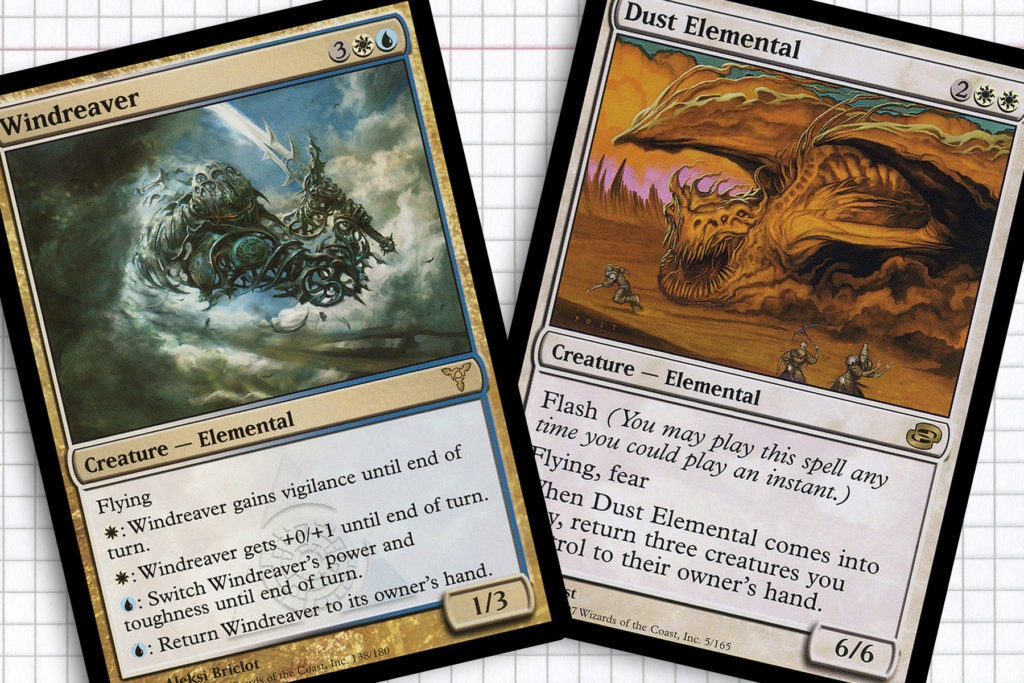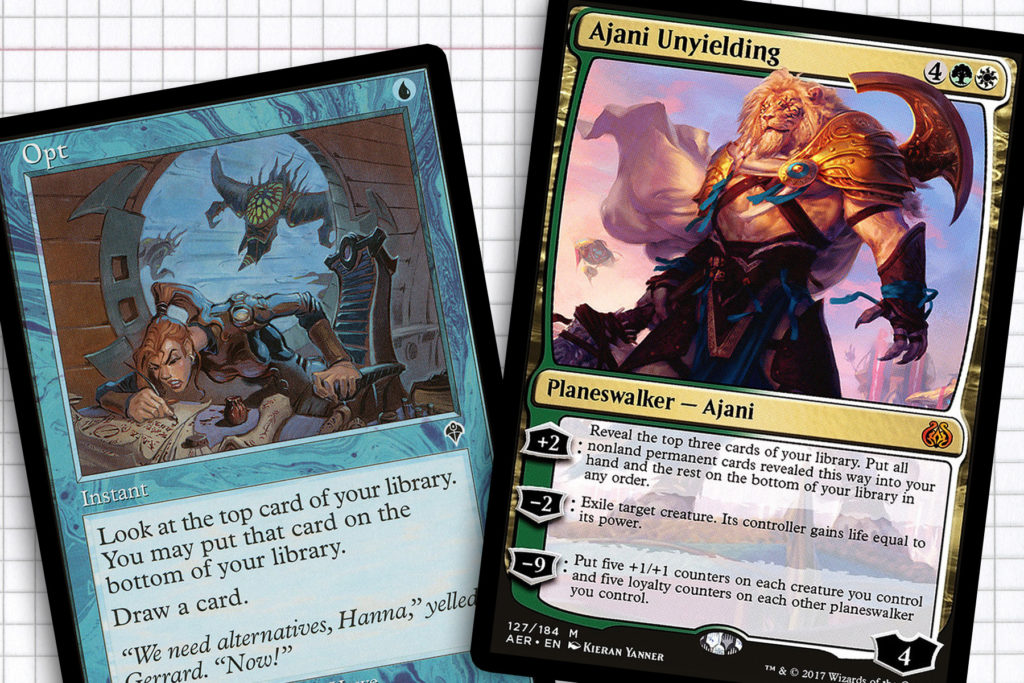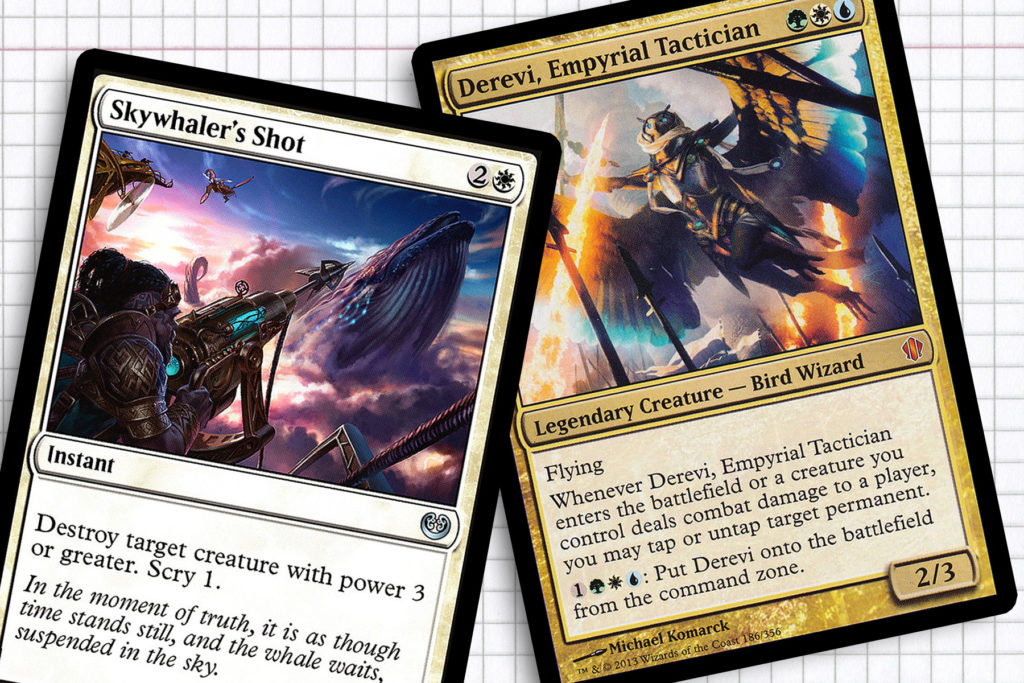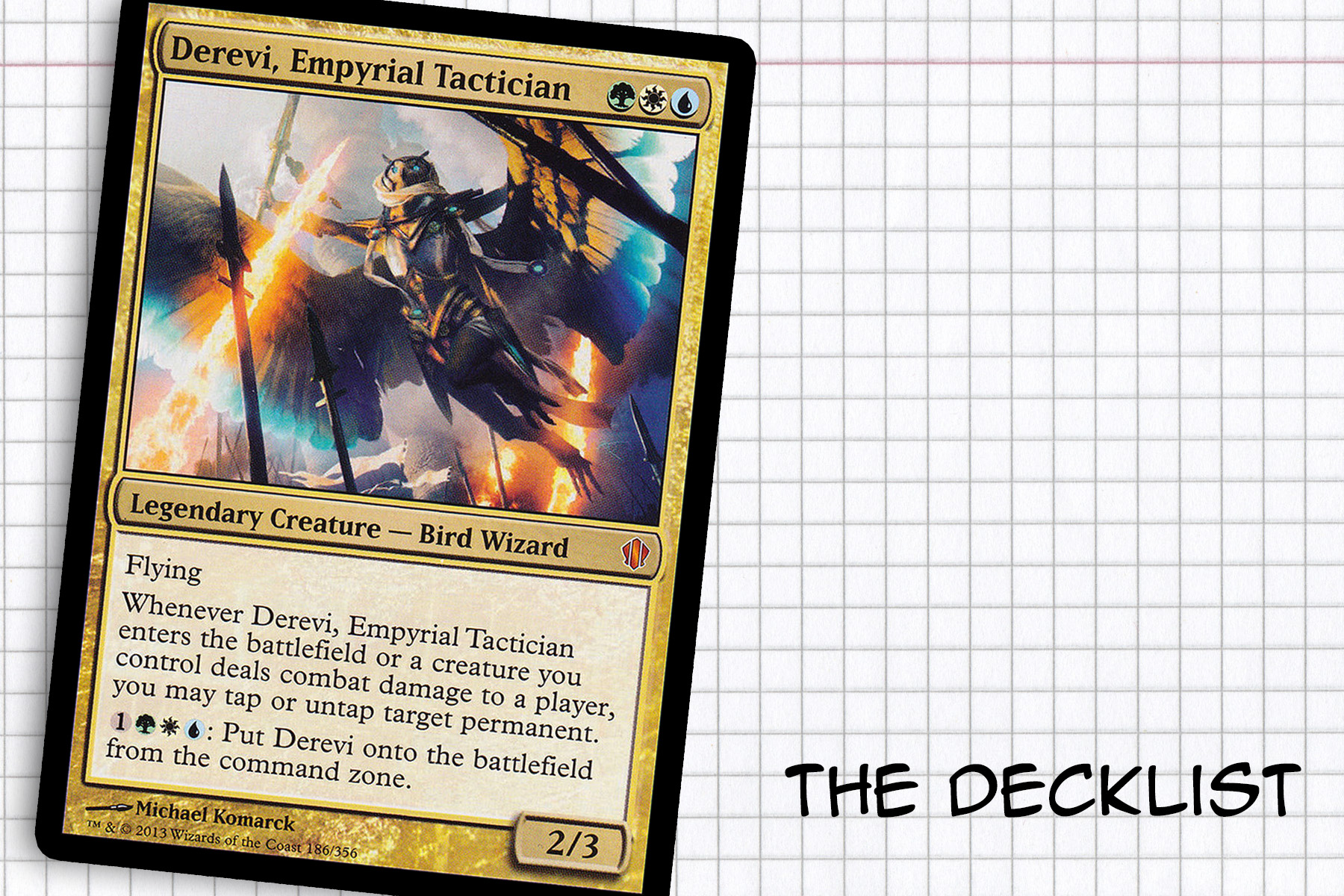Writing can have high-highs and low-lows sometimes. The good weeks I’m already writing on Friday, the bad weeks my Monday morning drive to work is usually my last ditch effort to assemble some idea for my article. This week was a bad week.
On Monday I was fresh off my last episode of Michael J Flores’ book, The Original Miser’s Guide, for the first time since about 2014. And out of habit, I decide to fill my drive to work with one of the bonus episodes—an interview with Patrick Chapin—to continue my Michael J fix. In the interview, for only a brief second, the topic of Caw Blade hits the table before the two move onto another topic. They kept talking about something and it took me about a minute to realize I wasn’t listening anymore and paused the interview.
As I went through the drive-thru of Caribou Coffee and started on the congested journey to work, I was teleported back to my youth, back to Caw Blade. While I had never played it in Standard, watching it in action was a vivid memory for me. The points started converging.
Caw Blade. Deadline. Commander.
What would Caw Blade look like in Commander? Alright, challenge accepted.
Defining Caw Blade
For the unaware, Caw Blade was possibly the best Standard deck of all time—especially in formats that were not depressingly broken. Starting its evolution in the hands of Brian Kibler as a deck referred to as “Caw Go” due to the typical play pattern of drawing you card for the turn and passing, combined with four Squadron Hawks being the deck’s only creatures. The idea was that the Hawks and fetchlands turn the Brainstorm ability on Jace, the Mind Sculptor into Ancestral Recall. The following turn you could cast a Hawk you had kept in your hand to reshuffle your deck and Brainstorm again. I remember watching the deck tech and thinking it was a funny idea at the time, not knowing what was to come.
With the printing of Sword of Feast and Famine in Mirrodin Besieged in February of 2011, a powerful deck emerged from the Caw Go-shell. Plugging in Stoneforge Mystic and the Sword created a hyper consistent Control/Midrange deck that proven tough to defeat while winning the Pro Tour. I can remember at the time seeing YouTube videos or listening to podcasts discussing the deck. We keep hearing the one redeeming factor of the deck: the better player almost always won. You see, this was in a Standard format that had been precluded by Faeries and Jund the two years prior. The general consensus at the time was that both decks—especially Jund—played themselves. So a deck that rewarded practice, play skill, and innovation may have been the reason the deck was allowed to survived unbanned as long as it did.
Upon the release of New Phyrexia in May of 2011 and the printing of Batterskull, the jig was up. Four copies of Jace, the Mind Sculptor appeared in every single deck in the top 8 of Grand Prix Dallas, signalling an imbalance in Standard. In June, the deck would be nuked—even in the face of the rising challenger, the Splinter Twin deck. Stoneforge Mystic and Jace, the Mind Sculptor got banned.
So what can we take away from this deck for Commander? All the traditional pieces are legal, so you can try your hand with Stoneforge Mystic, Squadron Hawk, the full “Sword of X and Y” cycle, Jace, counterspells, and deck manipulation like Preordain, but I feel like we might be missing the point. At the core, this deck was really refined consistency, tutoring, disruption, and a high amount of threats. I don’t know the exact colors we’re going to land in, so let’s just explore our options.

Embrace Change
The first big question is what creatures to play. Squadron Hawk isn’t exactly the best creature in Commander, you know. While the Standard Caw Blade deck’s only creatures were Stoneforge Mystic and Squadron Hawk in most of the builds, I believe the reliable feature of the playset of Hawks was that you always had access to them because they tutored more copies out of your library. For Commander, the creature suite became my biggest departure from the original deck.
My fix was to not look for creatures that accrued card advantage by getting more copies, but by being creatures that saved themselves from removal. While being more expensive to cast, creatures like Lantern Spirit, Blinking Spirit, Aetherling, and Windreaver are appropriate replacements for this deck. Include Dust Elemental, Eldrazi Displacer, or Stonecloaker and you gain the ability to also save the creatures that cannot save themselves, such as Balan, Wandering Knight or Armory Automaton.

Finding the Goods
With a general idea of the creature suite, we should next turn our attention to the deck manipulation as we build towards consistency. Where Caw Blade played Preordain, we can fill our suite with Ponder, Opt, actual Brainstorm, Serum Visions, and Portent. All are effective spells at working our way through the deck, and a few are criminally underplayed. I don’t expect that these will be as remarkably good as they would be in a 60-card deck, which is why I would be willing to open our color identity up to green to allow Peregrination and Thrasios, Triton Hero for additional scry utility.
To me green is conscious choice coming from a place of necessity, as it allows us to easily fix our colors and ramp with a minimal splash. Green also gets us one more equipment tutor card in the deck. We already had access to Stonehewer Giant, Steelshaper’s Gift, Relic Seeker, and Open the Armory to tutor out Equipment. Adding green, we now have access to Nazahn, Revered Blacksmith himself, along with Hammer of Nazahn and Behemoth Sledge.
With more colors we also have more choices for Planeswalkers. The serious players are welcome to break the bank on Jace, the Mind Sculptor, but I would take Jace, Unraveler of Secrets as a budget pick. Gideon Jura is still my favorite Gideon planeswalker and with the addition of green, I feel that Ajani Unyielding is great for not only being a way to nab a few permanents off the top of our deck, but also act as continual removal. Lastly, I like Elspeth, Sun’s Champion as a premium way to pump out creatures to pick up our equipment.

Control Freak
At this point, I believe we’ve covered our bases on consistency, tutoring, and threats. That leaves disruption. With the right string of plays, I see this deck going tall and not overcommitting creatures to the board, so I feel safe running board wipes akin to Supreme Verdict and Wrath of God in as small of a package as five cards. Experience tells me that decks like this should not be playing clean up if they don’t have to—let other players at the table be “Mr. Clean” at their own discretion. I would favor pinpoint removal: Swords to Plowshares, Path to Exile, or Skywhaler’s Shot to get the problem creatures or even chump blockers out of the way.
Spell management is another vector that Caw Blade played hard into, but in a multiplayer setting I don’t know that I would require heavy use of counterspells. Instead I pared the list down to Dissolve, Condescend, and Spell Pierce. We can sit on these for must-counter threats. If we’re playing our creatures correctly, they should protect themselves.
Finally, with some control elements in mind, it’s a good time to pick a general. I had considered Roon of the Hidden Realm, but that might have been a pick simply for the colors and less for actual casting. Ultimately, Derevi, Empyrial Tactician felt like best pick, partially because it flies and carries a sword or two really well, but also because it has the ability to “flash” and tap something down to help open up lines of play. Derevi also felt correct from a metagame perspective, because it has built up a bit of a reputation in the format for being obnoxious. Commander Caw Blade should carry that reputation as well.

Rough Draft
Finally, for once I have a rough list of how I might construct this deck.
Commander: Derevi, Empyrial Tactician
Creatures: Aetherling, Argent Sphinx, Armory Automaton, Balan, Wandering Knight, Blinking Spirit, Deadeye Quartermaster, Dust Elemental, Eldrazi Displacer, Fleeting Image, Lantern Spirit, Nazahn, Revered Bladesmith, Prescient Chimera, Relic Seeker, Stonecloaker, Stoneforge Mystic, Stonehewer Giant, Thrasios, Triton Hero, Thrun, the Last Troll, Windreaver
Instants: Brainstorm, Condescend, Crib Swap, Dispatch, Dissolve, Harrow, Opt, Path to Exile, Skywhaler’s Shot, Spell Pierce, Swords to Plowshares, Sylvan Reclamation
Sorceries: Day of Judgment, Farseek, Migratory Route, Open the Armory, Peregrination, Ponder, Portent, Preordain, Serum Visions, Skyshroud Claim, Steelshaper’s Gift, Supreme Verdict, Wrath of God
Artifacts: Batterskull, Behemoth Sledge, Darksteel Ingot, Darksteel Plate, Everflowing Chalice, Grafted Exoskeleton, Hammer of Nazahn, Lightning Greaves, Loxodon Warhammer, Masterwork of Ingenuity, Swiftfoot Boots, Sword of Feast and Famine, Sword of Fire and Ice, Sword of Light and Shadow
Enchantment: Sigarda’s Aid
Planeswalkers: Ajani Unyielding, Elspeth, Sun’s Champion, Gideon Jura, Jace, Unraveler of Secrets, Nahiri, the Lithomancer
Lands: 10 Plains, 9 Island, 4 Forest, Breeding Pool, Gavony Township, Glacial Fortress, Hallowed Fountain, Hinterland Harbor, Moorland Haunt, Reflecting Pool, Sunpetal Grove, Temple Garden, Temple of Enlightenment, Temple of Mystery, Temple of Plenty
In closing, this was a fun thought experiment for me, and whether I truly cracked the Caw Blade feel for anyone other than myself is left to be determined. Deck ideas can come from just about anywhere—even just a sense of nostalgia for a format long past. It may take a little creativity and research, but the challenge can be very fruitful. What card did I overlook? Were my color choices off? What deck would you port over? Track me down on Twitter and really grill me.
Thanks everyone, so long.
A special thanks to Twitter, especially David (@Yeeroy418), eric (@deveric), Alex (@Alexckszeto), Andrew (@_SEV8), Carrie (@ciaohararer), Michael J Flores (@fivewithflores) and Joey Pasco (@AffinityForBlue) for helping to jog my memory and point me into the right research directions.

